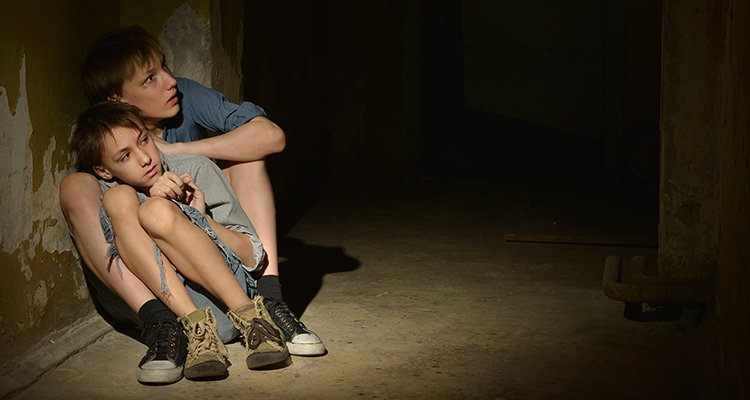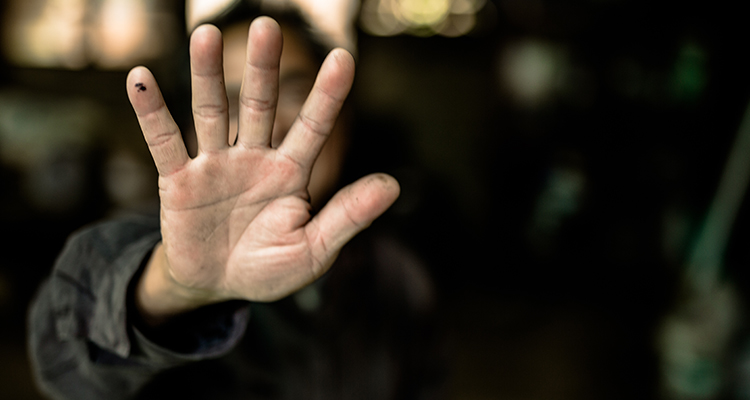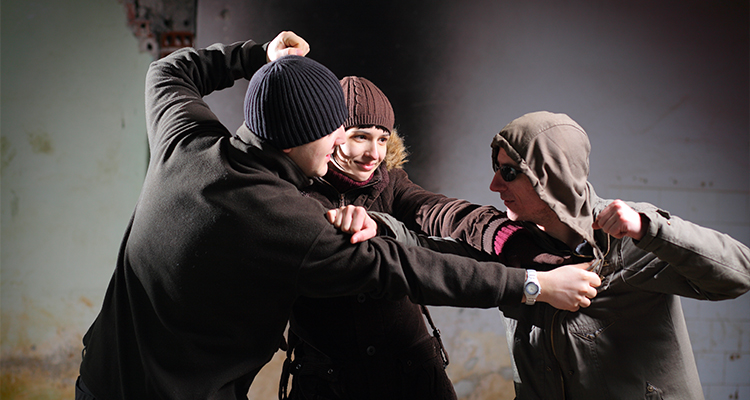Social Issue Essay Sample About Youth Violence
The problem of violence is highly relevant in our cruel time. Especially vulnerable to its dangers are teenagers. We can understand violence as the use of various forms of physical coercion against person or social groups in order to implement certain requirements (Seifert, Ray, Schmidt, 2012, p. 2).
Social crisis processes taking place in today’s society have a negative effect on the psychology of people, giving rise to anxiety and tension, anger, cruelty and violence. Our society has a serious difficulties and internal conflicts. The level of prevalence and diversity of immoral acts, crime and other deviant behavior has been increased significantly. Statistics show an increase of delinquent behavior among people of different social and demographic groups. Naturally, it is especially difficult for youth in this period. The growth of aggressive tendencies among teenagers represents one of the most pressing social problems of our society. In recent years, youth crime has sharply increased. At the same time, there is the fact of increasing of the number of crimes against the person, which lead to serious injuries (Biscontini, 2008, p. 14). The cases of fierce teen group fights became more frequent.
Deviant behavior of children and teenagers has a complex multifactorial nature. The research of the youth violence needs a couple of methods. Firstly, it needs the implementation of a systematic approach that reveals the hierarchy and relationship of adverse factors. Secondly, it needs the use of a comparative analysis, which compares favorable conditions of the social development with process of sociopathogenesis. Thirdly, it needs the implementation of an interdisciplinary approach, which does not allow confining within one specialization. (Seifert, Ray, Schmidt, 2012, p. 11-12).

Behavioral issues
Adolescence is the one of the most difficult periods of human development. Despite the relatively short duration (from 14 to 18 years old), it is largely determines the entire life of the individual. The formation of character and other basics of personality occur mainly in the adolescence period. Some circumstances made teenagers especially vulnerable and malleable to the negative influences of environment. These circumstances are: the transition from the childhood to the independence, the changing of the usual schooling for other types of social activities, and the vibrant hormonal changes of the body (Schmidt, 2007, p. 67-68). It is necessary to take into account the inherent teenagers desire to free themself from the care and supervision of parents, teachers and other educators. This desire frequently causes the denying of the spiritual values and the living standards of the older generation in general. On the other hand, there are more and more obvious defects in the educational work with teenagers. In this regard, abnormal family relationships and increasing of the divorce rate became especially significant.
Deviant behavior of teenagers has its specific nature and has been considered as the result of sociopathogenesis that has been influenced by a variety of targeted, organized and spontaneous, unorganized effects on the personality of the child, adolescent, young man. Thus, a major role among the reasons that lead to various deviations plays social factors. That’s mean that understanding of this factors is necessary for effective educational prevention. Thereby, the prevention of anti-social behavior of teenagers goes through a sociological knowledge, on the basis of which the nature of teenagers deviant behavior has been exploring and practical measures for the prevention of anti-social manifestation has been developing (Seifert, Ray, Schmidt, 2012, p. 45).
Youth violence is now the most important issue. Where once it has been considered that youth violence is inherent to male teenagers only, in recent years young females are attracting more attention. And the case is not only in the growth of minor offenses, alcoholism and substance abuse among girls. It is extremely important that these deviations acquire great social significance for girls, and, therefore, are more severe. In this case, female teenagers are increasingly becoming “instigators” and initiators of boy’s behavior problems.

Among the variety of interrelated factors that lead to the manifestation of youth violence, there are such factors as:
- Individual factor. It acts at the level of psychobiological assumptions of anti-social behavior, that impede social adjustment of the individual;
- Psychology and education factor. It reflects in the defects of school and family education;
- Social and psychological factors. This factor reveals the adverse features of the interaction of the teenager and his closest associates in the home, on the street, in the educational team;
- The personal factor, which is primarily manifests itself in the actively-selective attitude of an individual to the preferred environmental communication, to the standards and values of his surroundings, to pedagogical influences of family, school, public, and in the personal value orientations and in the personal ability to self-regulate his behavior;
- Social factor. It determinants by social and socio-economic conditions of society’s existence (Prothrow-Stith, Spivak, 2009, p. 126-127).
The origins of educational failures and youth violence are going through educational and social neglect. This interrelation has been noticed in the last century, but it is relevant as an explanation of contemporary realities. From this it follows that youth violence is caused by consequences of improper upbringing in the family and at school, not by innate mental or physiological defects. Most frequently, the roots of aggression and increased anxiety goes away in early childhood, entrenching itself or being smoothed at an older age (Biscontini, 2008, p. 93).
Typology of youth violence
No matter how different personality characteristics and behaviors aggressive youth has, it has some common features. These features include poverty of values, their primitiveness, lack of hobbies, and the narrowness and the instability of interest. These youth generally have low level of intellectual development, heightened suggestibility, imitation, immaturity of moral ideas. They are characterized by emotional rudeness, anger, directed against their peers and against the surrounding adults. Such teenagers have an extreme self-confidence (maximum positive or maximum negative), increased anxiety, fear of wider social contacts, self-absorption, inability to find a way out of difficult situations, the prevalence of protective mechanisms over other mechanisms of behavior regulating. However, among aggressive teenagers there are teenagers that have highly intellectual and social development. Their aggression is the tool of raising the prestige, showcasing of their independence and adulthood (Seifert, Ray, Schmidt, 2012, p. 104).

Frequently, these teenagers are in some opposition to the official leadership of the school, which expressed in their emphatic independence from the teachers. They pretend to have informal, but more authoritative power, relying on their actual physical force. These informal leaders have a great organizing force. It is no wonder that teenagers that are not very legible in the goals and means, gathering around informal leaders. The ability to accurately identify the weak and those, who find themselves defenseless against the arrogance and cynicism, contributes to the success of such leaders. Especially if that cynicism is presented under the guise of moral principle “the weak die out and the strong will survive” (Schmidt, 2007, p. 157).
There are two groups of teenagers that have propensity to violence:
- Teenagers with socialized forms of anti-social behavior. Mental and emotional disorders are not characteristic to them;
- Teenagers with unsocialized aggressive behavior. They have variety of mental disorders.
Extensive materials, extracted by Kathryn Seifert, Karen Ray, Ph. D and Robert Schmidt, based on the analysis of documentation of schools, interviews with teachers, parents and neighbors about the interests, respects of each individual teenager with peers, adults, its features, looks, different aspects of behavior, during testing, questionnaires, surveys of teenagers via questionnaires, essays and observations, allowed Seifert and others to distinguish four groups:
- Teenagers with a stable complex of abnormal, immoral, primitive needs, with deformation of values and attitudes, striving to consumption lifestyle. They are characterized by selfishness, indifference to the feelings of others, intolerance, the absence of authority, cynicism, anger, rudeness, temper, rage, pugnacity. Physical aggression prevails in their behavior;
- Teenagers with deformed needs and values, which have a more or less wide range of interests that differ heightened individualism, wishing to take a privileged position by the oppression of the weak and younger. The pursuit of physical force manifestes itself situational and only against those who are weaker.
- Teenagers that have a conflict between the deformed and positive needs that differ from one-sidedness of interest, opportunism, pretense, duplicity. Their behavior is dominated by indirect and verbal aggression.
- Teenagers with weakly deformed needs without certain interests. They differ in lack of will, suspiciousness, cowardice and vindictiveness. They are characterized by ingratiating behavior to older and stronger friends. Their behavior is dominated by verbal aggression and negativity (Seifert, Ray, Schmidt, 2012, p. 190-191).
These classifications are based on the aggressiveness of teenager’s complex personality traits that are typical to a certain group of teenagers. Analysis of the causes of variation in personality development and behavior can more specifically identify methods of educational work in order to correct aggressive behavior of teenagers.
The reasons and specific manifestation of youth violence at different stages of adolescence
The contemporary teenager is living in a world complicated by its content and trends of socialization. This is due, firstly, to the tempo and rhythm of the technical and technological changes that are bringing teenagers lots of new demands. Secondly, to the richness of the information that creates a lot of “noise” that deeply affects on the teenager, who has not yet produced a clear vital position. In this case, the young people are developing a sense of protest, which is conscious frequently. At the same time, their individualization is increasing, which leads to selfishness in the case of the loss of the general social interest. Teenagers more than any other age group are suffering from the instability of social, economic and moral situation in the country (Prothrow-Stith, Spivak, 2009, p. 176). They are losing today’s necessary orientation in the values and ideas – the old ones are destroyed, the new ones are not created.
The combination of adverse biological, psychological, family and other social and psychological factors distorts the whole way of teenager’s life. The violation of emotional relationships with other people is typical for them. Teenagers are falling under the strong influence of adolescent groups that are forming antisocial scale of life values. The way of life, the environment, style and social networks contribute to the development and consolidation of youth violence. Thus, the negative climate in many families causes the appearance of aloofness, rudeness, hostility, striving to do everything out of spite against the will of others, which creates objective prerequisites for the emergence of defiance, aggression and destructive actions. Intensive development of self-awareness and self-criticism leads to the fact that the teenager discovers the contradictions not only in the outside world, but also in his own self-image (Seifert, Ray, Schmidt, 2012, p. 219).
In the first stage of adolescence (10-11 years old) child characterizes himself very critically. About 34% of boys and 26% girls (Biscontini, 2008, p. 189) give themselves completely negative characteristics, noting the predominance of negative traits and behaviors, including rudeness, cruelty and aggressiveness. In this case, physical aggression is dominating in the children of this age, so the indirect aggression is less pronounced. Verbal aggression and negativity are at the same stage of development.
Negative attitude toward themselves is preserved at the second stage of adolescence (12-13 years), causing at a large extent by estimates of others, both adults and peers. At this age, negativism is most expressed (Biscontini, 2008, p. 193-194). There is an increase of physical and verbal aggression, while indirect aggression gives a shift compared to younger teenagers, but it is less pronounced though.
In the third stage of adolescence (14-15 years) there is a comparison of by adolescent its own personality characteristics and behaviors with certain principles, adopted in the reference groups. Thus, verbal aggression goes on the foreground. Increasing of physical and indirect aggressiveness is insignificant, as well as the level of negativity.

Elementally folding companies of peers unite teenagers of similar development level and interests. Group establishes and even cultivates deviant values and behaviors; it has a strong impact on the personal development of young people, becoming a regulator of their behavior (Prothrow-Stith, Spivak, 2009, p. 207). The sense of acceptable and unacceptable and teenager’s lost sense of distance lead to unpredictable events. There are special groups, which are characterized by setting on the immediate satisfaction of desires, on the passive protection of the difficulties, on the desire to shift responsibility onto others. Teenagers in these groups are differing by dismissive attitude towards learning, poor academic performance, neglect of duties. In every possible way they are avoiding of performing any duties and requests at home, doing homework, and even attending classes. These teenagers find themselves faced with a large number of “superfluous time” (Seifert, Ray, Schmidt, 2012, p. 234-235).
Teenagers are particularly dependent on the microenvironment and the specific situation. One of the key elements of the microenvironment in the personality emerging is the family. The decisive factor is not complete it or not. It is about the moral atmosphere, the relationships that are developing between adult family members, between adults and children. Established that the level of physical forms of aggressive behavior is most pronounced among children of the working environment, and the most aggressive children are children of rural machine operators. However, this group of teenagers has a minimum level of negativity. Verbal forms of aggressive behavior are typical for most teenagers from a family of mid-level officials (Prothrow-Stith, Spivak, 2009, p. 217).
There is established that among teenagers convicted for aggressive crimes, 90% of crimes were committed under the influence of alcohol. Youth violence is often associated with alcoholism. Leading by alcohol desire to “keep up with the other” and “thirst for heroism” often leads to antisocial demonstrative actions and violence. Especially, such actions are enhanced by the young women in the teenager’s company. Quite often they are also the organizers of violence and illegal actions. Moreover, they have more expressed “roughening” of personality and aggressive manifestations in comparison with young males.
Prevention and correction of aggressive behavior
Correctional work on the prevention of youth violence with teenagers has its own characteristics. Individual work with a teenager is more effective than work in a group. Right from the beginning it is better to start working with the family of teenager. After the diagnoses of family relationships and the degree of disharmony should be followed social correctional work both individual and group. But the main focus should be on individual work with a teenager. General conversations about the need of “good behavior” are completely ineffective. A special place in correctional work should be given to the formation of a circle of teenager’s interests on the basis of his character and abilities features. It is necessary to aspire to minimize the period of free time of teenager by bringing him to the pursuits that positively forming the personality – reading, self-education, making music, sports, etc.
Proceeding from the fact that teenager development is carried out in the activity, as well as the teenager seeks to assert himself, his position as an adult, among adults, it is necessary to ensure the inclusion of the teenager in such activity, which is in the interests of adults, but at the same time creating opportunities for teenager to implement and establish himself at the level of adults (Schmidt, 2007, p. 235-236).

T.V. Biscontiny has allocated socially recognized and socially acceptable activity. Sociological meaning of this activity for a teenager is that by participating in it he is actually joins to the affairs of society, occupies a certain place in it and keeps his new social position among adults and peers. In the process of this activity teenager admits by adults as an equal member of society. This activity gives to teenager an opportunity to develop his self-consciousness; it forms a normal life. But the methods and principles of such activities require significant adjustments in the case of inclusion of a teenage that differ by increased aggressiveness. First of all it is necessary to establish a system of expanded activities that creates tough conditions and a certain course of action and constant monitoring. Under the condition of the sequence and gradualness of initiation of aggressive youth to various types of recognized social activity – work, sports, artistic, organizational and others – it is important to adhere to the principles of social evaluation, continuity, and clear construction of this activity (Biscontini, 2008, p. 265).
Conclusion
Violence is a type of deviating behavior. Participation in fights and assertion themselves via their fists is a well-established line of behavior for some teenagers. The situation is compounded by instability of society, interpersonal and intergroup conflict. The age of manifestation of aggressive actions is reducing. Even more often there are cases of aggressive behavior in girls.
An indispensable condition for youth violence is an excess of free time, lack of forming identity positive hobbies. On the other hand, overprotection contributes a delinquent behavior as well as neglect. Reactions caused by excessive control and tedious sermons and teachings, are expressed in violence and aggressiveness.
Prophylaxis and prevention of youth violence is not only socially relevant, but psychologically necessary. The problem of increasing the effectiveness of early prevention should be resolved in the following main areas:
- Identifying vulnerabilities and socializing effects by the immediate environment, which cause deviations in the development of the teenager’s identity and timely neutralization of these troublesome adverse effects;
- Modern diagnosis of teenager’s antisocial behavior and implementation of a differentiated approach in the selection of educational and preventive means of psychological and pedagogical correction of youth violence.
This raises the need for a systematic analysis of personal, social and psycho-educational factors causing deviations in social behavior of youth. Early detection of teenager’s behavioral problems, systemic analysis of the nature of their origin and adequate educational and correctional work would give the chance to prevent the cases of youth violence.

